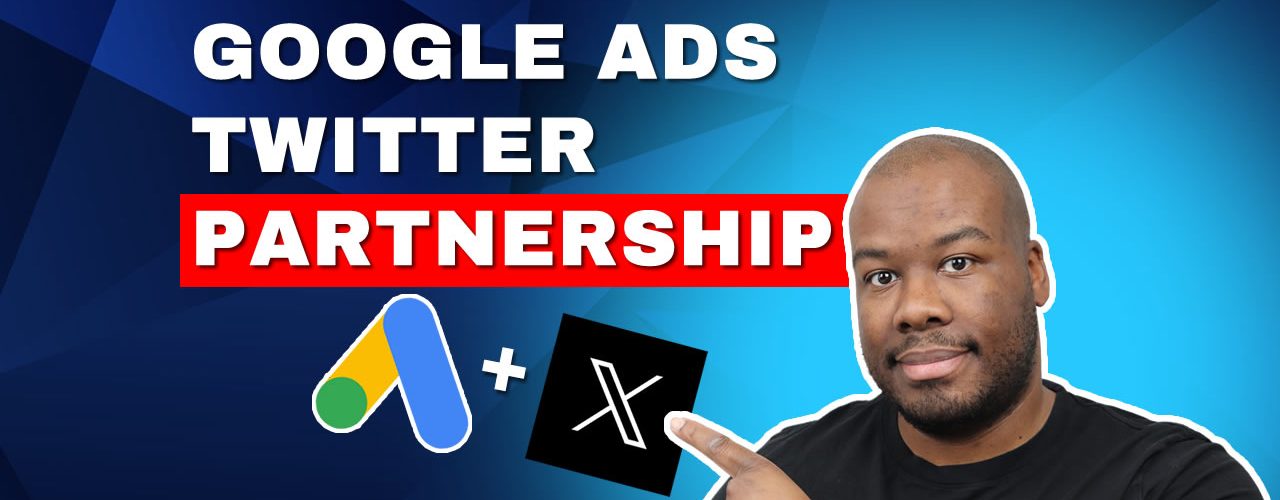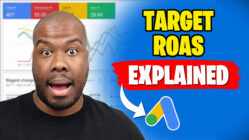Google has just announced a partnership with X, the platform formerly known as Twitter. And this partnership is probably going to help X more so than it will help Google. But what we’re going to unpick today is understand how this partnership came about. What happened? How did this even happen? And also understand whether or not advertisers should be interested in this.
And finally, we’re going to try and understand a little bit more about how this partnership could work for Google Ads advertisers. So firstly, why has this happened? Well, isn’t it obvious? Elon Musk and X are having a hard time. They’ve had tons of advertisers pull their budgets out of their platform because they don’t like the direction of travel the platform is taking.
Rightly or wrongly, they’ve pulled their budgets out of the platform. They don’t like Elon Musk’s leadership and where the platform is going, meaning there’s a big hole in the budget for Elon Musk and X. So along comes Google to the rescue and says, Hey guys, let’s do a partnership where we can send our advertisers spending dollars on Google ads and place ads onto X.
And then that will basically become an additional placement for the display network. So as a Google Ads advertiser, should you be excited by this? Should you think this is a great idea? Or should you be a bit worried about low quality inventory? And I think the best place to start is looking at the ad format itself.
So in terms of matching a Google Ads ad format into the X platform as a tweet, there are tons of options that kind of tie together quite nicely. When you think about a Twitter ad and think about the tweet format. You have an image and you have a bit of text. Now, of course, when you look at responsive display ads, that is the same case.
You have images and text. When you look at a performance max ad, you have images and you have text. So there are a lot of similarities and crossover between the ad formats. And it’s quite easy to see how potentially. any Google format with display advertising in terms of images or videos or any small snippets of text in the ad format, how that could tie very easily into a series of tweets that you can use as promotional tweets.
Of course, I’m just speculating, but from a logical point of view, On a display network placement, you would expect the display ads to work in that regard on Twitter the same way it works on other platforms. So, this seems like a kind of logical next step, and it means that there shouldn’t be any kind of disruption in the formats that you’re used to serving on the display network, whether it’s on a Google partner site.
or whether it’s on X itself. So now you know how the potential ad formats in Google Ads could tie into a placement on the X home feed, it’s important to then understand whether or not this could be a good thing for advertisers. And I think there’s no better place to look than the statement Google made about the announcement of this partnership.
Farrell Sklerov, the head of communications and partnerships at Google, actually had this to say about the relationship with X. This is an opportunity for advertisers to reach a broader audience, but as always, they can choose what sites and apps their ads run on. But he goes on to say, Any publisher who participates in this type of partnership must abide by our publisher policies.
The first part of what he said was pretty generic. It’s kind of, you know, Hey, there’s a partnership. Here’s the announcement, blah, blah, blah. That’s fine. The second part is definitely to alleviate the fears of advertisers who are running ads on the display network in any capacity. So what he’s saying is if you don’t want to advertise on X, you can go into your account and exclude that placement.
So he’s kind of alleviating the fears of advertisers with that part of the announcement. But I don’t think Either of those parts are as interesting as the final thing he said. When he said that any publisher participating in this kind of partnership must have to abide by the partner’s policies, meaning Google’s policies, that again is a big way of alleviating fears of advertisers.
Because of course, the biggest worry here is low quality inventory. We know for sure that when you look through X, if you’ve ever used the platform before, it is full of spam and Google has a bots problem on its own placements and its own network, let alone on placements on Twitter. So this is going to be a big problem.
I think on this type of placement, I think potentially it could be seen as low quality inventory because it’s not necessarily going to be as well targeted. In fact, the bot problem is so bad that Elon Musk himself has said he would want every single user to validate themselves and pay for using the platform in order to eliminate the bot problem.
If you think click fraud and low quality inventory is a problem on Google’s network right now, when X opens up. An additional massive amount of inventory that Google is going to have to sell to make this partnership work. X have to make money out of it, so Google has to sell this inventory. Then you haven’t seen anything yet, potentially, because Twitter is a platform where you’re going to see a lot of spam.
However, I won’t be too harsh, I won’t rule this out yet, because like… every single thing and every new announcement and anything new you get your hands on as an advertiser. If there’s an opportunity to do it, you should be testing it anyway. If you’re running ads on display, you’re running P max, whatever it is, I wouldn’t necessarily exclude X yet.
You want to get the data first, of course. So maybe I’m jumping the gun a little bit, but that’s just. What I’m thinking that there’s going to be potentially a bigger problem with spam on X than there is on potentially other platforms. But there could be some upside as well, because one thing we have no idea about is how the data sharing between Google and X is even going to work.
Because on the display network, Google owns all the placements. They know exactly what they’re doing and how people are going to be targeted. But with the user of X, it’s a different social media platform and people are accessing the platform. via an app most of the time. So it becomes a bit different, which means X is going to potentially have to share some profile data with users on Google ads in order for us to be able to target ads effectively use the placement effectively.
There’s going to have to be some kind of data sharing. We’ve got no detail. on how that’s going to work yet, but it will be interesting finding out what options are available to us as advertisers. But what do you think? Are you excited by this announcement? Do you think that advertising on Google ads and having an ad placed onto X, formerly known as Twitter?
Do you think this is a good idea? Do you think it’s going to do wonders for your campaign performance? Let me know in the comments. I’ll reply to all comments on all new videos like this video. If you like it, don’t forget to subscribe. Don’t forget to head over to darren-taylor.com for consultancy for all of your digital marketing needs and I’ll see you guys on my next video







